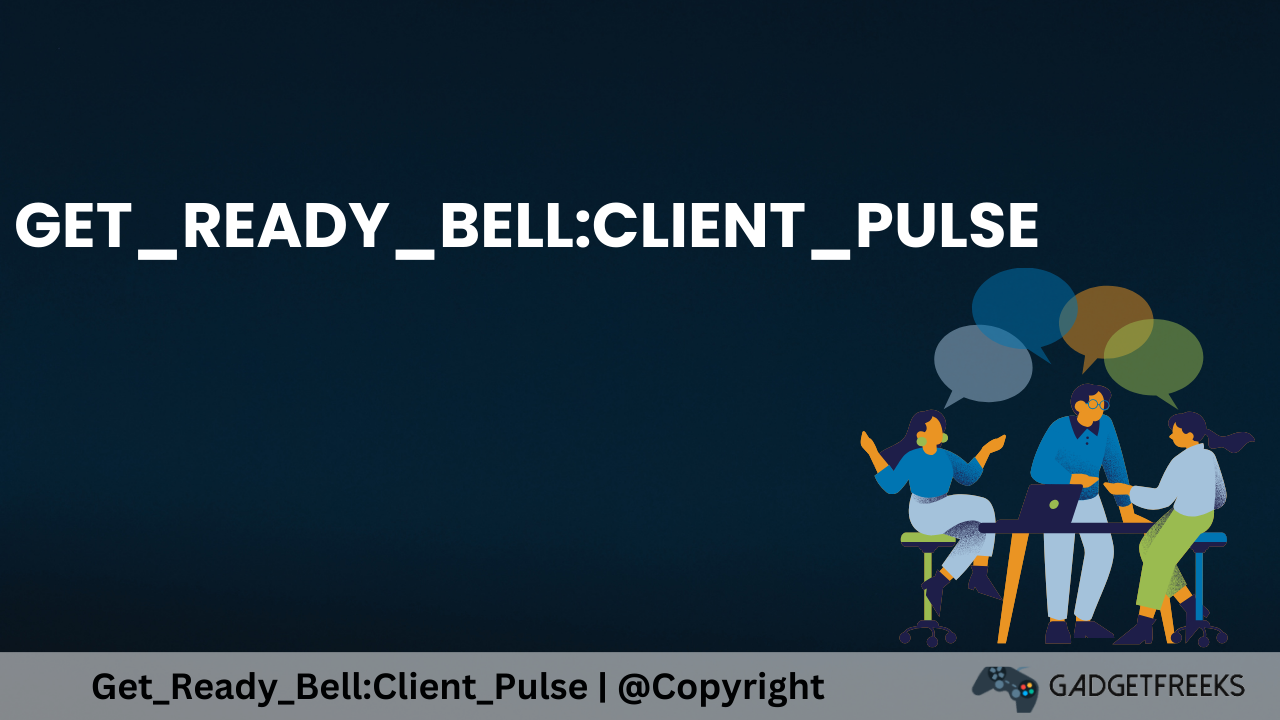
In today’s challenging market, knowing your clients is essential. With many choices available, customers want experiences that fit their needs.
“Client pulse” matters here. Knowing clients’ real-time thoughts and feelings helps businesses form solid bonds and grow consistently.
What is Get_Ready_Bell:Client_Pulse, and Why Is It Important?
Client pulse means consistently checking clients’ thoughts, feelings, and expectations. It’s about getting a real-time look at their mindset.
Businesses quickly adjust to client needs, creating happier and more loyal customers. Satisfied clients come back, refer others, and spend more, which boosts business growth.
“Get_Ready_Bell:Client_Pulse” is a powerful tool for real-time feedback. It helps businesses gather and analyze client feedback quickly and efficiently, allowing for data-driven decisions that improve the client experience.
How Can Businesses Implement Client Pulse Effectively?
Identifying Key Touchpoints for Feedback Collection
First, identify key moments to gather feedback, such as during purchases, after-sales, or customer service. The aim is to capture feedback for the client at critical times.
Utilizing Real-Time Analysis Tools
Tools like “Get_Ready_Bell:Client_Pulse” are crucial for real-time analysis. They let businesses gather and analyze feedback instantly, spotting issues and opportunities as they happen rather than waiting for periodic reports.
Training Teams on Handling Feedback
Gathering feedback is only the beginning. Teams need training to manage this data well, including recognizing feedback, making adjustments required, and informing clients.
Proper training ensures feedback is effectively acted upon to improve the client experience.
Impact of Customer Feedback on Business Strategies
Client feedback shapes business strategies. Listening to clients reveals areas needing improvement and new growth opportunities. For example, it might be worth adding if many clients request a specific feature.
Businesses can create focused strategies to increase engagement and keep clients by understanding their preferences. Knowing client desires enables personalized marketing, resulting in better campaigns and higher conversion rates.
Leveraging Analytics to Understand Client Behavior
The Importance of Analytics
Analytics are crucial to understanding client thoughts and desires. By examining feedback patterns, businesses gain insights into client behavior and preferences, essential for making informed decisions that enhance the client experience.
Using Feedback Patterns
Feedback analysis reveals what clients like and dislike. Focus on frequent complaints. Highlight popular services in marketing to attract more clients.
Creating Personalized Services
Analytics help tailor services and experiences to individuals. When clients feel understood, they stay loyal. Personalization shows clients they matter, fostering lasting relationships.
Personalizing Customer Experience Based on Client Pulse
Personalization builds customer loyalty. Companies match interactions and offers to individual needs using client pulse data. They send tailored email marketing or make personalized website suggestions.
Personalized experiences make clients feel appreciated and understood, strengthening their loyalty. This level of personalization sets businesses apart from competitors, making clients more likely to return.
Monitoring Client Engagement
Use both qualitative and quantitative techniques to track client engagement comprehensively. Analyze numbers and interpret the stories behind them.
Feedback forms, tools like “Get_Ready_Bell:Client_Pulse,” and surveys are crucial for fully understanding client satisfaction.
Consistently monitoring client engagement helps businesses anticipate and address issues before they escalate. It also provides insights into what clients appreciate, allowing enterprises to replicate successful strategies.
Importance of Client Feedback
Client feedback is vital for understanding the client’s pulse. By analyzing feedback from surveys, reviews, or social media, businesses gain valuable insights into the client experience.
It identifies problems, evaluates successes, and makes wise choices to improve products, services, and customer satisfaction.
Real-Time Analytics
Real-time analytics are crucial for effectively using client feedback. Advanced tools and AI quickly identify patterns and trends in feedback, allowing for swift responses to issues. Real-time insights help customize services and offers, enhancing the client experience.
Client Pulse Strategies
Businesses use client pulse strategies to collect and study feedback, aligning with their goals. They conduct surveys, organize focus groups, monitor social media, and analyze data. They also understand the best communication channels to gather helpful feedback.

Future Trends in Client Pulse
The client pulse landscape is evolving with technology and changing customer expectations. Future trends may include AI, machine learning, voice feedback, and sentiment analysis for deeper insights.
Businesses must stay on top of these trends to keep their competitive advantage.
Monitor Client Pulse
Monitoring client pulse is an ongoing task, requiring continuous updates and adjustments. Real-time client behavior and preferences data allows businesses to identify trends, address issues promptly, and refine strategies.
Continuous monitoring ensures businesses remain competitive and responsive to client needs.
Client Engagement and Loyalty
Understanding client pulse boosts client engagement and loyalty. Promptly addressing client preferences and concerns strengthens client relationships. Real-time insights identify effective retention strategies, ensuring long-term client engagement and loyalty.
Importance of Understanding Client Pulse
In today’s challenging market, knowing the client’s feelings is vital. Ignoring client feedback and real-time insights risks falling behind rivals. Focusing on the client’s pulse keeps you ahead, builds client loyalty, and ensures lasting business growth.
